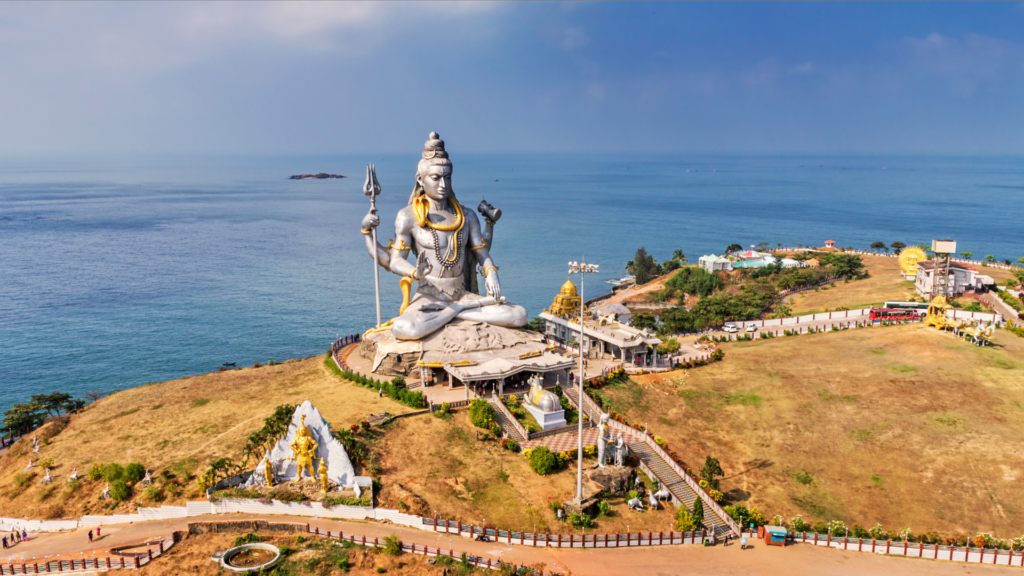The Kawar Yatra is a religious pilgrimage in India that holds immense significance for devotees of Lord Shiva, particularly followers of Bhole Baba. It is a spiritual adventure that takes participants on a sacred journey, where they carry water from the holy rivers and offer it at various Shiva temples.
Mythological Values and Beliefs of the Kawar Yatra
The Kawar Yatra holds its roots in Hindu mythology, where it is believed that during the mythical churning of the cosmic ocean, a pot of poison emerged. To protect the world from its destructive effects, Lord Shiva, also known as Bhole Baba, consumed the poison. This act turned his throat blue, earning him the name “Neelkanth.” The Kawar Yatra symbolizes the devotion and gratitude of the devotees towards Lord Shiva.
The Significance of Bhole Baba
Bhole Baba, an endearing name for Lord Shiva, represents the aspect of divinity that is free-spirited, carefree, and benevolent. Devotees believe that Bhole Baba is the embodiment of infinite compassion and wisdom. His followers engage in the Kawar Yatra to seek his blessings, experience spiritual rejuvenation, and attain a deep sense of inner peace.
Pros and Cons of the Kawar Yatra
The Kawar Yatra offers several benefits to participants, such as:
- Spiritual Upliftment: The yatra provides a unique opportunity for devotees to connect with their spiritual selves, fostering a deeper understanding of their religious beliefs.
- Physical Endurance: The yatra involves walking long distances, carrying the sacred water pots on one’s shoulders, which promotes physical endurance and stamina.
- Community Bonding: The yatra brings together devotees from various backgrounds, fostering a sense of unity, solidarity, and shared spiritual experiences.
While the Kawar Yatra has numerous advantages, it’s essential to consider some potential challenges:
- Crowd Management: The yatra attracts a significant number of devotees, which can lead to overcrowding and challenges in maintaining order and safety.
- Health Risks: Participants must ensure they are physically fit to undertake the demanding journey, as it involves walking long distances and exposure to varying weather conditions.
Five Prominent Places for the Kawar Yatra in India
- Haridwar: Haridwar, located in Uttarakhand, is a prominent destination for the Kawar Yatra. Pilgrims gather here to collect water from the holy river Ganges and proceed to various Shiva temples.
- Varanasi: Varanasi, situated on the banks of the river Ganges in Uttar Pradesh, is considered one of the holiest cities in Hinduism. It attracts devotees from all over the country during the Kawar Yatra.
- Sultanganj: Sultanganj in Bihar is renowned for the sacred pilgrimage associated with the Kawar Yatra. It is here that the holy river Ganges takes a sharp turn, and devotees collect water for their onward journey.
- Deoghar: Deoghar, located in Jharkhand, is home to the famous Baidyanath Temple. It serves as a significant pilgrimage site during the Kawar Yatra, drawing devotees in large numbers.
- Nasik: Nasik in Maharashtra witnesses a grand celebration of the Kawar Yatra. Devotees gather here to collect water from the Godavari River and perform rituals at the Trimbakeshwar Temple.
Yatra Timings
The Kawar Yatra usually takes place during the holy month of Shravan (July-August) according to the Hindu calendar. Devotees embark on their spiritual journey, carrying their water-filled pots, and visit various Shiva temples along the way. The yatra spans several weeks, allowing participants to immerse themselves in devotion and connect with fellow devotees.
Must buy for the Kawar Yatra
- Waterproof Backpack: A sturdy, waterproof backpack is essential for carrying sacred water pots and other belongings during the yatra.
- Trekking Shoes: Comfortable and durable trekking shoes provide the much-needed support for long walks and ensure a comfortable yatra experience.
- Water Bottles with Filters: Access to clean drinking water is crucial during the yatra. Water bottles with filters help purify water from various sources, ensuring safety and hydration.
- Portable First Aid Kit: Carrying a compact first aid kit equipped with essential medical supplies can prove invaluable in case of any minor injuries or ailments.
- Devotional Music Player: A portable music player loaded with devotional songs can enhance the spiritual experience during the yatra, providing a soothing and serene ambiance.
Final Words
The Kawar Yatra, a spiritual adventure undertaken by devotees of Bhole Baba, holds deep-rooted mythological significance. It provides a platform for devotees to express their devotion and seek blessings from Lord Shiva. The yatra offers both spiritual and physical benefits, fostering a sense of unity among the participants. With its prominence in places like Haridwar, Varanasi, Sultanganj, Deoghar, and Nasik, the Kawar Yatra continues to inspire countless individuals on their sacred trails.
FAQs
Q: How long does the Kawar Yatra last?
A: The Kawar Yatra spans several weeks, typically taking place during the holy month of Shravan.
Q: Can anyone participate in the Kawar Yatra?
A: Yes, the Kawar Yatra is open to all devotees who have the physical stamina and dedication to undertake the pilgrimage.
Q: Are there any specific rituals associated with the Kawar Yatra?
A: The Kawar Yatra involves collecting water from holy rivers, carrying it in pots, and offering it at various Shiva temples along the journey.
Q: What is the significance of carrying water pots during the Kawar Yatra?
A: Carrying water pots symbolizes the devotee’s willingness to offer their devotion and gratitude to Lord Shiva, following the example of Bhole Baba.
Q: Are there any age restrictions for participating in the Kawar Yatra?
A: While there are no strict age restrictions, participants should consider their physical fitness and consult a healthcare professional if needed before undertaking the
